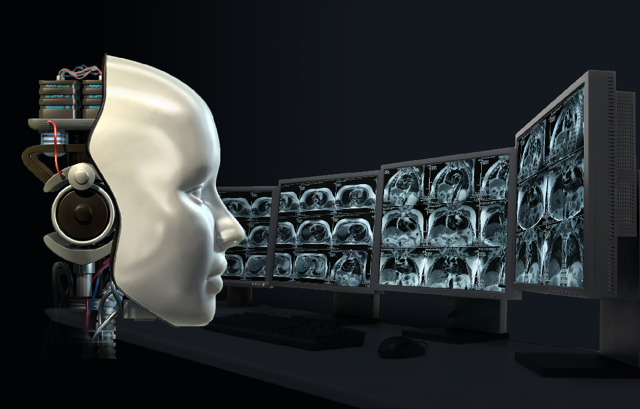Modern medicine is facing many challenges. As the science of medicine advances, it gets harder and harder. We have, in a way, picked all the low hanging fruit. People are living longer, and their medical conditions are getting more challenging to understand and to treat. In order to continue making medical progress we need more advanced technology.
This technology – like stem cells, CRISPR and other forms of genetic manipulation, monoclonal antibodies, immune therapy, multi-drug cocktails, and others – is expensive and complex. In the US healthcare is 17.6% of GDP. Countries have a hard time paying for the healthcare we have the technology to deliver and the public wants, leading to either rationing of care (by one mechanism or another), gatekeepers like insurance companies, or different qualities of care for different income levels.
The increasing complexity of modern medicine leads to increasing specialization of practitioners, which then causes further increases in the cost of care and challenges in coordinating care among many specialists.
Sorting through and optimizing the increasing complexity of medicine requires rigorous science, and yet the science of medicine is under assault by a populist anti-science movement, loosely grouped under the umbrella of “wellness” or “alternative medicine”. As we have ceaselessly documented at SBM over the years, the CAM movement is ultimately about weakening scientific standards in medicine to allow for con artists to sell their snake oil to an unprotected public.
So successful has this highly funded campaign of misinformation, conspiracy theories, and doubt been, they now have a representative at the highest levels of federal regulation of healthcare who is already systematically destroying our research and regulatory infrastructure and our institutional knowledge.
There is no one solution to these myriad challenges. They require the institutions of medicine to clearly see these challenges for what they are, to work together to solve them, and to educate the public rather than cede public opinion to Tik Tok influencers.
But there is a relatively new tool that might help health professionals make the practice of medicine more effective and efficient. Of course, any tool can be used for good or ill, so it’s important to take advantage of this tool early and shape its development so that it serves the public health rather than exploits it. I am talking about artificial intelligence (AI). I know there is a lot of hype concerning AI, but despite this it is a legitimately powerful tool of information, and medicine is largely driven by information.
In fact, information is both the power and bane of modern medicine. Practitioners are armed with a great deal of scientific information, but they are also drowning in it. This is what leads to hyperspecialization, but also to practitioners struggling to keep up (and often failing). Even when we have highly researched treatment and diagnostic algorithms for specific situations, they are often not followed because practitioners are not up to date.
AI tools programmed to function as expert assistants can bridge the gap, giving practitioners the information they need at the point of patient care. This has been a goal of evidence-based medicine for 40 years, but the problem has only gotten worse. Actually the internet and Google searches have improved the ability of practitioners to find relevant information quickly enough to use at the point of care, and is now common practice. AI can help make this process better and more thorough.
AI paired with an electronic medical record, if leveraged strategically, can find problems or conflicts in a patient’s care, minimize error, alert a practitioner to deficiencies, and recommend optimal diagnostic and treatment pathways.
AI is also useful for seeing patterns that humans cannot. Here are some recent examples. The CONCERN early warning system (EWS) is an AI application that reviews patient data in the hospital/ICU setting looking for patterns that suggest a patient is about to deteriorate. A recent study using CONCERN found that it identified problems two days earlier than usual care and resulted in a 35.6% decrease in mortality. The researchers are looking to expand its use to other settings, like emergency departments.
A recent review found that AI radiology diagnostic aids improve the accuracy and efficiency of radiological diagnoses. There is still a lot of room for improvement, and we are on the steep part of the curve. AI tools need improvement, but also doctors need to be trained on how to optimally use them, and systems need to evolve to incorporate AI tools in the most effective way.
There are also specific tools, like one developed to diagnose and time strokes based on brain scan, specifically to determine if the patient is elligible for a clot-busting treatment. In research AI models can be used to predict things such as the emergence of antibiotic resistance.
Just because there is a lot of hype in the AI industry, I would not dismiss these developments as hype. As I have tried to outline, medicine is perhaps ideally situated to benefit from AI applications. But this will not happen automatically. What is needed is a large investment in the development of specific AI applications and their incorporation into patient care and medical systems.





